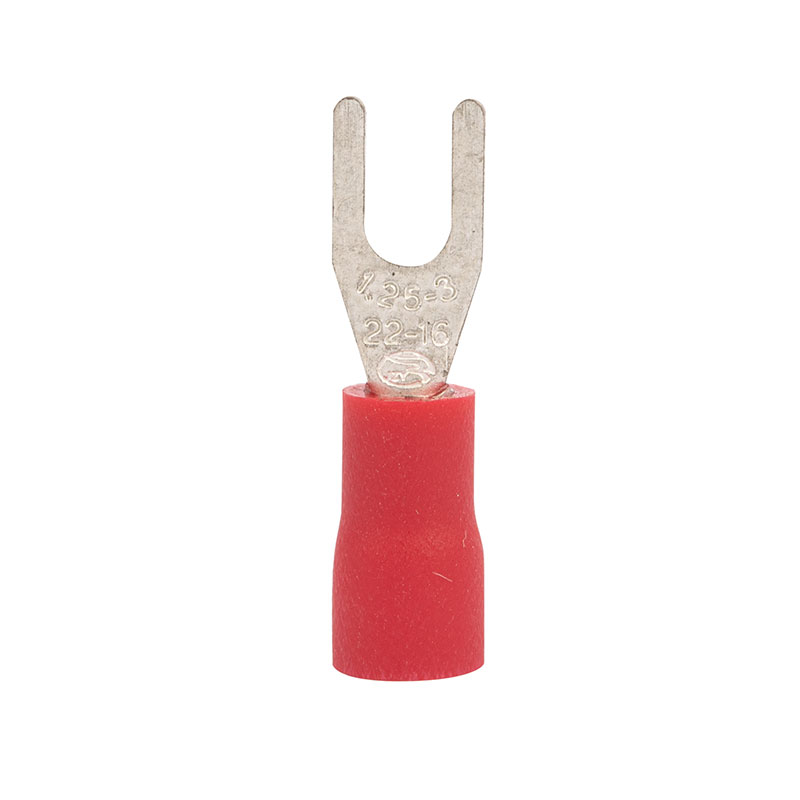Spade Terminals
Spade terminals, also known as spade connectors or fork terminals, are a type of electrical connector widely used in various applications to securely and easily connect electrical wires to devices, components, or other wires. They are called "spade" terminals due to their shape, which rese......
Send Inquiry
Product Description
Spade terminals, also known as spade connectors or fork terminals, are a type of electrical connector widely used in various applications to securely and easily connect electrical wires to devices, components, or other wires. They are called "spade" terminals due to their shape, which resembles a flat spade or fork with two tines.
Key features of spade terminals:
1. Shape: Spade terminals have a flat, U-shaped design with open ends. The open ends allow them to be easily slipped onto a terminal post or stud.
2. Convenience: They provide a quick and simple way to make electrical connections without the need for soldering. The open fork design allows for easy insertion and removal from the terminal post.
3. Types: Spade terminals come in various sizes, ranging from small ones suitable for small-gauge wires to larger ones for heavy-duty applications. They are available in different widths and thicknesses to accommodate a wide range of wire sizes and terminal posts.
4. Insulation: Spade terminals are available in both insulated and non-insulated versions. Insulated spade terminals have a plastic or rubber sleeve that covers the metal spade, providing electrical insulation and protection against accidental short circuits.
5. Material: Spade terminals are typically made from various materials, such as copper, brass, or other conductive metals, to ensure good electrical conductivity and corrosion resistance.
6. Terminal Style: Some spade terminals have a single crimp point for wire attachment, while others have multiple crimp points or "flags" for improved wire strain relief and a more secure connection.
Usage of spade terminals:
Spade terminals find widespread use in automotive, marine, industrial, and electronic applications, among others. They are commonly used in:
1. Automotive wiring: Spade terminals are used in automotive electrical systems to connect wires to switches, relays, fuse boxes, and other components.
2. Appliance wiring: They are employed in household appliances like washing machines, dryers, refrigerators, and ovens to connect wires to various components and motors.
3. Electrical panels: Spade terminals are used in electrical panels and circuit breakers to connect wires to terminal blocks.
4. Audio and speaker connections: Spade terminals are utilized to connect speaker wires to speaker drivers and audio equipment.
When using spade terminals, it's essential to ensure a proper and secure crimping of the terminal onto the wire to prevent loose connections and potential electrical hazards. Using insulated spade terminals in appropriate applications can also enhance safety and prevent accidental shorts.










